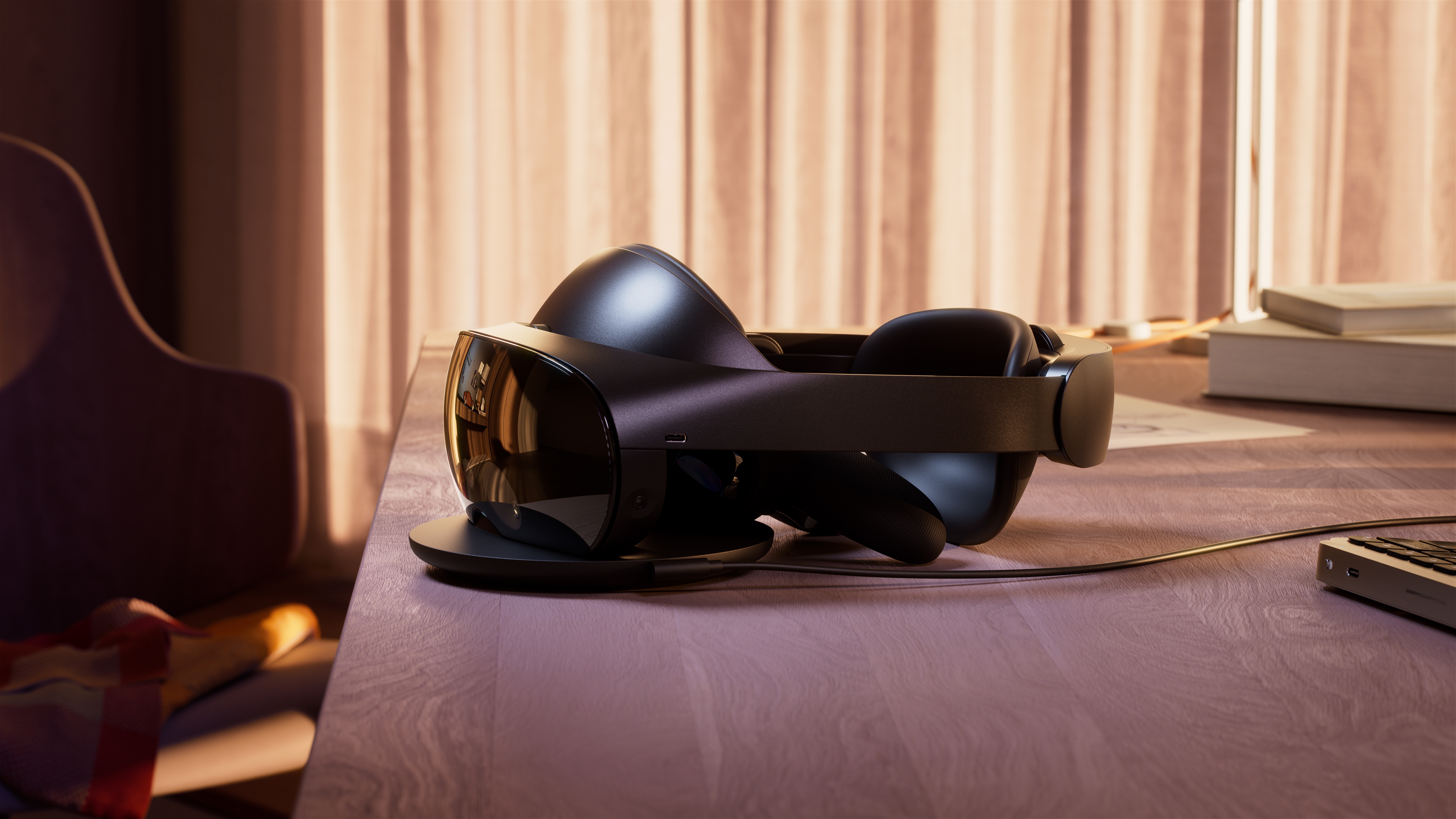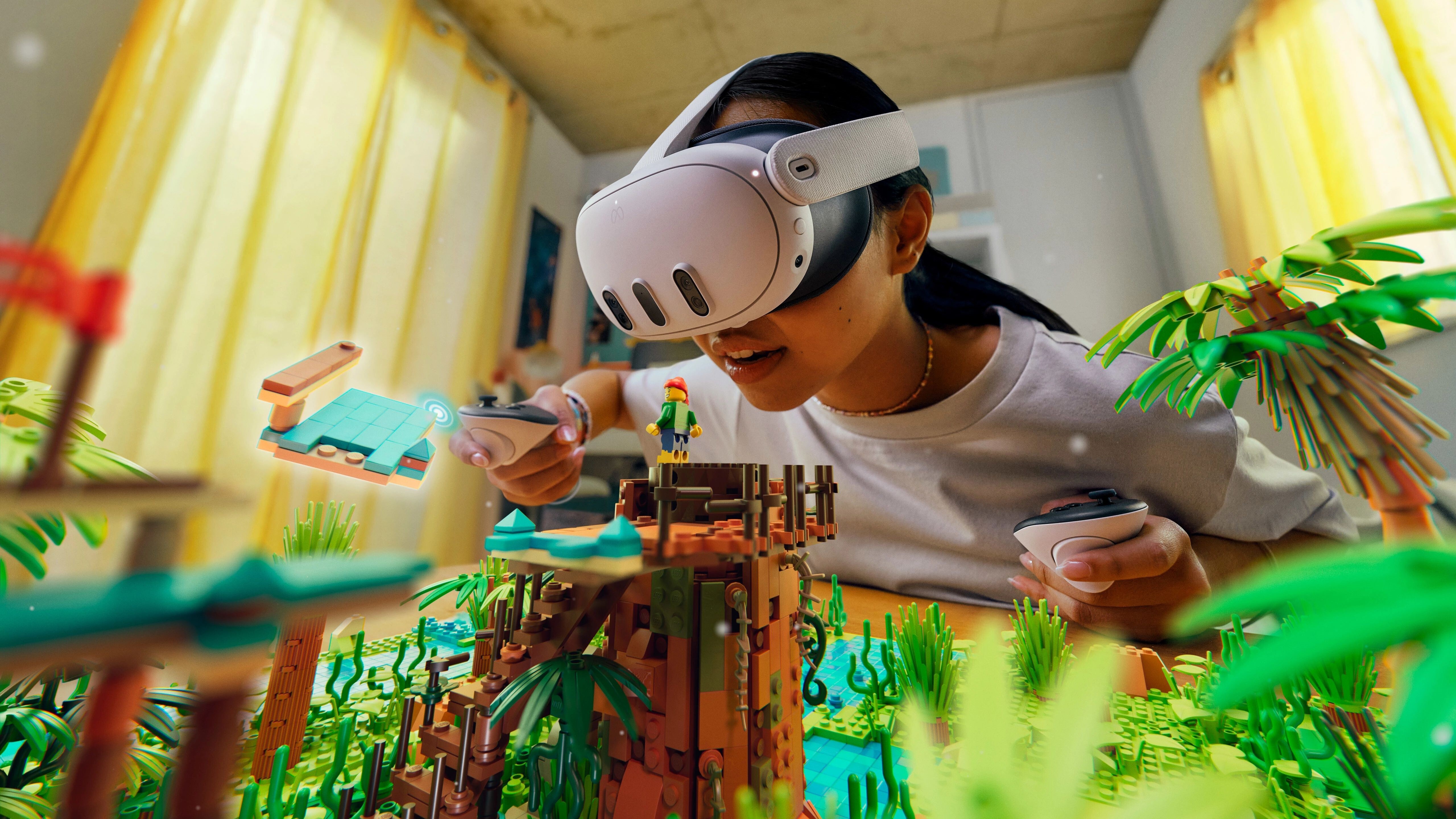I'd love an OLED Meta Quest 2 Pro, but cancelling it for now is the right decision
The Meta Quest Pro 2 should return – just not anytime soon

Over the weekend we and others reported that the Meta Quest Pro 2 has been canned – or, more specifically, the in-development project that was ‘likely set to be the Meta Quest Pro 2 but not yet officially called that’ to use semantics Meta’s own CTO has deployed in the past (and again recently) – and while I’d still love to see a Meta Quest Pro 2 this is probably the right decision for now.
The reason for the cancellation? The Apple Vision Pro – but that's not, reportedly, because Meta is scared to face off against its rival tech titan’s VR headset. Rather, Meta has apparently struggled to offer high-end specs – chiefly micro-OLED displays to match what’s offered by the Vision Pro – at a relatively affordable price somewhere around or below the original Quest Pro’s $999.99 / £999.99 / AU$1,729.99 (via The Information – the article is behind a paywall).
This determination to keep things affordable is all but certainly fueled by the first Meta Quest Pro.
While I thought the Quest Pro was a solid headset at launch it's been severely overshadowed by Meta’s own Quest 3 – a device which Meta called its “most powerful headset yet” barely six months after the Pro released, and which would later sell for a third of the Pro’s original $1,500 / £1,500 / AU$2,450 cost (and half of the price the Pro dropped to after a few months on sale).
Meta hasn’t revealed exact Quest Pro sales figures, but the signs suggest they aren’t great – so it's unlikely that making the follow-up more expensive than the Pro's current price would improve things.

Meanwhile, while we lack official figures, leaks and Apple’s attitude towards the Vision Pro suggest that its own headset has also missed the mark in terms of the success it was expected to achieve. Nevertheless, the bold shoot-for-the-moon strategy Apple took has irreparably altered our perception of ‘Pro’ consumer headsets.
A Quest Pro – even one sold at a third of the Vision Pro’s $3,499 / £3,499 / AU$5,999 price – would be directly compared to the Apple model, and any shortcomings (even valid ones) wouldn’t be viewed as acceptable. But as I mentioned above, high-end tech leads to unavoidably high prices that people simply aren't willing to pay.
Get daily insight, inspiration and deals in your inbox
Sign up for breaking news, reviews, opinion, top tech deals, and more.
Take a look at the Steam hardware charts for July 2024 – the high-end but aging Valve Index takes the number-two spot, with 16.10% of users relying on it for VR games last month. Meanwhile, the Meta Quest 2, Meta Quest 3, and Oculus Rift S – affordable models in the first, third, and fourth popularity spots respectively – make up 39.66%, 15.65% and 7.46% of the usage share each for a collective 62.77%. And more recent high-end devices aren’t hitting more than around 0.50% popularity (some even less).
A big part of this lack of popularity is that there just isn’t a compelling reason to splash out.

VR's chicken and egg
It becomes a self-perpetuating cycle. Because lower-end models are vastly more popular it’s generally not worth the risk for developers to create a high-end-only VR game or app, and as a result almost every VR app that's currently available can run on lower-end hardware, save for a few expensive and niche industry-focused services. This in turn means there’s no incentive for headset buyers to go big, as they can pick up a low- or mid-range headset and get most of the same experience they'd get from a higher-end model, which means those cheaper headsets continue to dominate the market, taking us back to the beginning, and the reluctance of developers to invest in high-end apps.
Buying a high-end VR headset can feel a bit like spending several thousand dollars (or pounds) on a high-end gaming PC kitted out with an 14th gen Intel CPU, 32GB of RAM, and an Nvidia GeForce RTX 4090 when the only game you can play on it is Minesweeper. Yes, it might do that a bit better than a cheaper PC, but it hardly justifies the outlay.
For this cycle to be broken anytime soon we need to see something bold. I thought Apple might achieve this with the Vision Pro by making it a 'wearable Mac', but it instead opted for more of a 'wearable iPad' that can only offer most Mac features if you have an Apple computer already – which somewhat defeats the point.
Alternatively, we could see more platforms incentivizing development through financial investment – perhaps for exclusivity deals like Meta’s latest approach on that front, with Batman: Arkham Shadow landing only on its Quest 3. This approach of creating software exclusively for high-end headsets could backfire however; if the high-end model still doesn't take off the manufacturer will have doubled down on a hardware and software flop – a terrible business decision, especially given that the manufacturer could have instead focused on promoting the low- and mid-range models that are proven successes.

Instead, we’re left with the reality that we simply don’t need, and very few people want, a Pro-level VR headset right now.
I think we'll get there eventually. As VR becomes more popular the desire for high-end hardware will grow with it. Plus, with Meta opening up its HorizonOS to third-parties we could see other hardware makers take a tilt at a Pro device – and with these running on Quest software they would effectively be a Meta Quest Pro 2 in all but name.
It’s worth reminding ourselves that the recent reports don’t say the Quest Pro 2 is dead and buried, with some of its planned specs – such as eye-tracking – set to appear on other future devices (maybe a Meta Quest 4 or Meta Quest 5). Plus, as Meta’s CTO has made abundantly clear, it's a prototype that's been culled, rather than the entire concept.
Even with ‘La Jolla’ (the codename given to the cancelled Meta Quest Pro 2) having been shelved, a different Meta Quest Pro 2 could land in 2027, or only slightly behind the leaked schedule in 2028, by which time we may have seen shifts in the types of headset and software being produced by Meta and the industry at large; and no matter when the Quest Pro 2 lands these shifts need to happen.
We’ll have to wait and see what happens, but we likely don’t have long to wait for an all-new Quest headset, with Meta’s next piece of VR hardware expected to see the company take the complete opposite approach, in the shape of the budget-friendly Meta Quest 3S.
You might also like...

Hamish is a Senior Staff Writer for TechRadar and you’ll see his name appearing on articles across nearly every topic on the site from smart home deals to speaker reviews to graphics card news and everything in between. He uses his broad range of knowledge to help explain the latest gadgets and if they’re a must-buy or a fad fueled by hype. Though his specialty is writing about everything going on in the world of virtual reality and augmented reality.